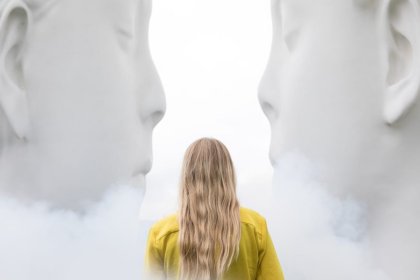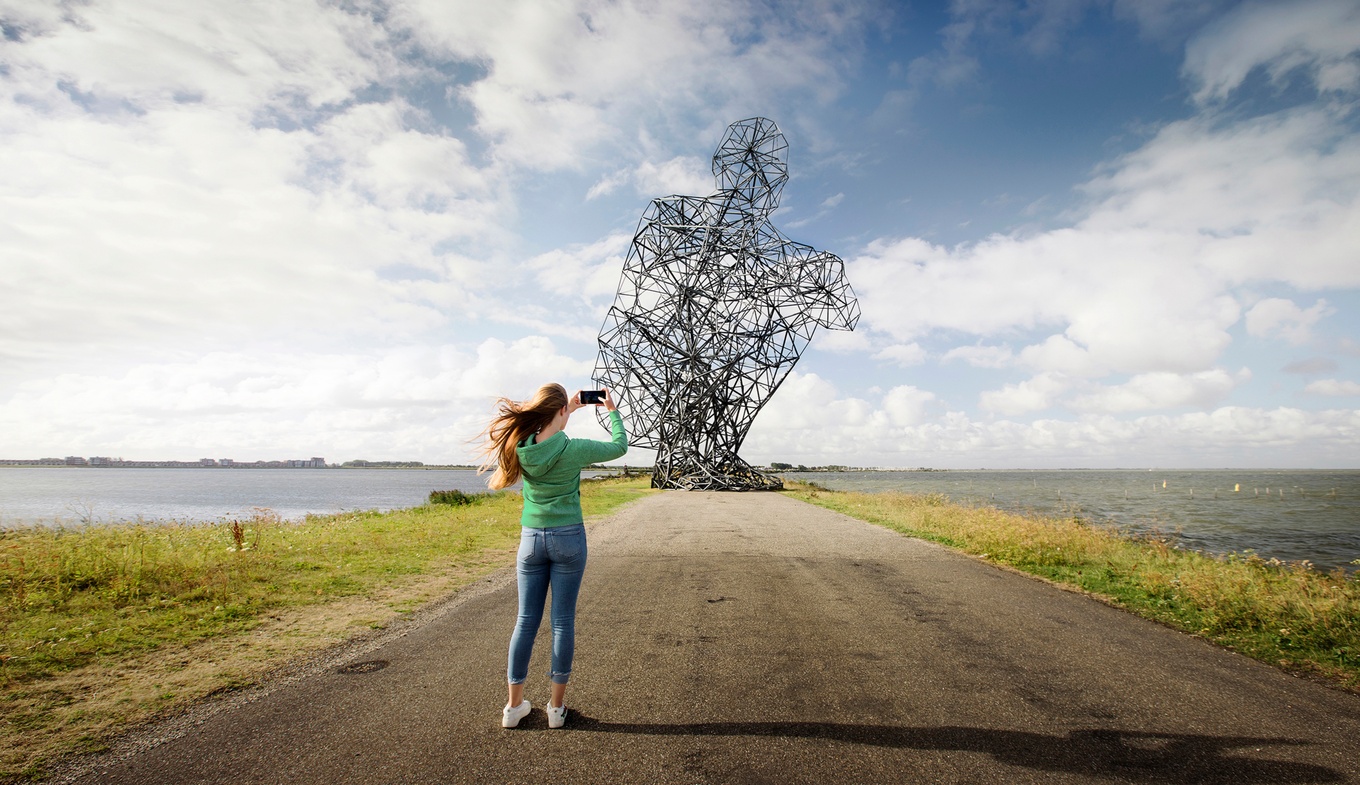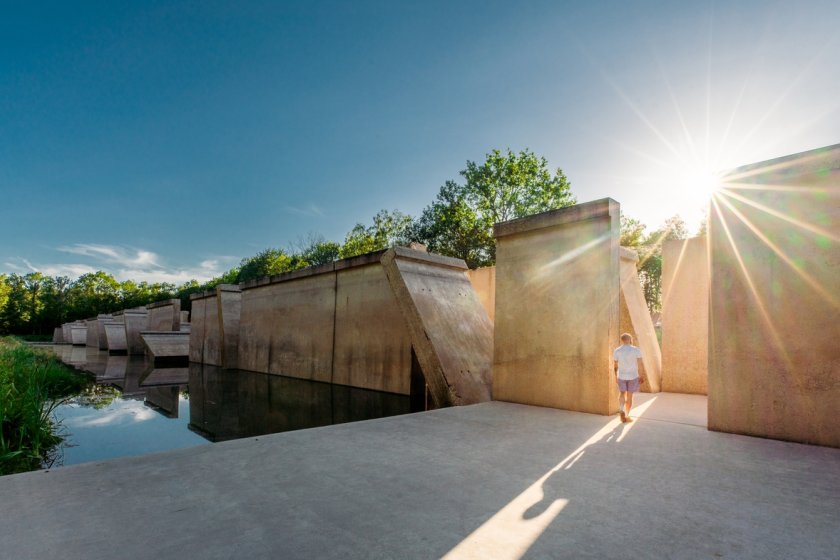Asian Artman Runnung Down a Dike in a Wind Storm
How water influences art, food and culture
In his poem 'Retention of Kingdom of the netherlands', the peachy Dutch poet Hendrik Marsman writes: "And in every province, the voice of water, with its lapping disasters, is feared and hearkened." It'southward a fitting evocation of the Dutch spirit: water forms who we are, and and so h2o shapes our culture. It's helped usa prosper economically, simply information technology's besides a source of pleasure and creativity. In the warm summer months, we picnic and play at beaches and lakes; in winter nosotros skate on the ice.
Water also saturates our fine art. Marine subjects have been a favorite of Dutch artists since their earliest works. From Rembrandt'due south stormy scenes to British artist Antony Gormley's behemothic statue that sits atop a breakwater dam on Lelystad'south declension, you tin discover water-inspired art all over the land. And whether it'south a serene sea view, frozen canals or an epic naval battle between the Dutch and the Spanish, Dutch artists' experimentation with light, water and paints influenced, well, everyone.
Across the Netherlands you'll also detect epic examples of the fine art movement known equally 'land art', including works by internationally renowned artists who have been inspired by the Dutch mural. People who desire to enjoy this blazon of art often get to the province of Friesland or Flevoland, which is also home to nature reserves, beaches, modern architecture, and is the largest flower bulb region. In fact, Aardzee (Earth Sea), i of the largest artworks in the Netherlands, by Dutch sculptor Piet Slegers, can be establish in the heart of the province. It represents the transformation of the Zuiderzee into reclaimed land. Anthony Gormley'due south 'Exposure', a 26-meter-high statue of a crouching man looking out over the Markermeer lake, sits on a breakwater dam next to the city of Lelystad. Gormley was inspired to create the gigantic artwork by the unspoiled landscape surrounding information technology.

© Marcel van Kammen

© Visit Flevoland

© Visit Flevoland
Every bit well as using the landscape for inspiration, artists are fifty-fifty using the materials which the Dutch used for water direction to create new art. Ane instance is 'Deltawerk//' at the Waterloopbos, a 250-meter-long concrete bowl which was once used to test overflowing defenses and was taken apart and flooded past artists Ronald Rietveld and Erick de Lyon to create "a monument of the Dutch struggle against the water". It is both an ode to the past and great engineering piece of work, and a radical new approach to arts and crafts a new cultural heritage in holland. Another case of this is Daan Roosegaarde'south 'Gates of Lite' at the Afsluitdijk, which illuminates its monumental floodgates with a retroreflective cloth that glows in the headlights of oncoming cars. As you lot drive through, a futuristic landscape lights up around you, basking the colossal construction and your surround in an otherworldly lite.
Line-fishing and farming in the Netherlands
Water has also helped power commerce in the Netherlands, none more then than the fishing trade. It was the industry that helped drive the Netherlands to economic prosperity in the 15th century and was mainly focused around the onetime Zuiderzee. Originally a collection of small lakes known as 'Almeare' during the Roman age, this big inland sea was formed after a serial of floods around 1200. In the centuries that followed, the Zuiderzee became a lifeblood for the Dutch communities around its shores, but navigating the region remained extremely challenging as ships were often dilapidated by storms or capsized in shallows. To date, hundreds of shipwrecks have been discovered on the former seabed.
The construction of the Afsluitdijk meant that the Zuiderzee ceased to exist, and the new lake created in its place is the IJsselmeer – and eventually the Markermeer, post-obit the opening of the Houtribdijk in 1975. Though the salty seawater is gone and the fish stocks have dwindled, you lot can nonetheless experience this rich heritage past visiting historical maritime towns and villages like Urk, Enkhuizen, Lemmer and Workum, where the Zuiderzee culture still exists, with each place boasting its own special character. Explore how the Dutch people have lived aslope h2o at Zuiderzeemuseum Enkhuizen. Located in a beautiful fishing village by the IJsselmeer lake, this open up-air museum brings the history of the people living around the Zuiderzee to life.
While at the other stop of the state in Zeeland, the Oosterschelde National Park is a world of mudflats, salt marshes and sandbars. In these places you can still discover a rich underwater world filled with oysters, venereal, lobsters, clams, shrimp and many other kinds of fish and shellfish. Several diving schools have visitors on expeditions to notice this aquatic environment, and head to the local restaurants to enjoy upward some of the freshest catches you will discover, including authentic Oosterschelde lobster, oysters, and clams.
H2o has influenced Dutch cuisine, too. When we reclaim land, the silty soil that'southward left backside is perfect for growing rich grasses and bountiful produce. These rich grasses helped Dutch cows become some of the nearly admired in the globe. In fact, a Holstein Friesian moo-cow named Pauline Wayne even provided fresh milk for William Howard Taft, the 27th President of the United States. Pauline lived at the White House, grazing on the grasses of its lawns, and bizarrely was fifty-fifty once interviewed past The Washington Mail.
The Netherlands' well-fed cows produce rich milk, which is also sometimes transformed into another national symbol: Dutch cheese. According to the latest data, the Dutch are the world'southward 3rd-largest milk consumers. And, though about people around the world may not know much about Dutch cuisine, everyone knows Dutch cheese.
Source: https://www.holland.com/global/tourism/holland-stories/land-of-water/water-story.htm